Betta fish are straightforward to care for, colorful, glamorous, and full of personality, so it’s no wonder they make such great pets for aquarists! In fact, second to goldfish, bettas are the world’s number one fishy friend.
In the betta’s natural habitat, the water bodies are heavily vegetated, providing shelter, protection from predators, and offering cover for hunting betta fish. So, by providing plenty of aquatic plants in your betta’s tank, you’ll create a home-from-home environment where your pet is sure to thrive.
Keep reading to discover ten of the best plants for betta fish!
Top 10 Plants for Betta Fish
Here are our favorite ten plants that can thrive in a betta fish tank. All these species enjoy the same freshwater conditions as your betta and are pretty easy to care for.
Java Moss (Taxiphyllum barbieri)
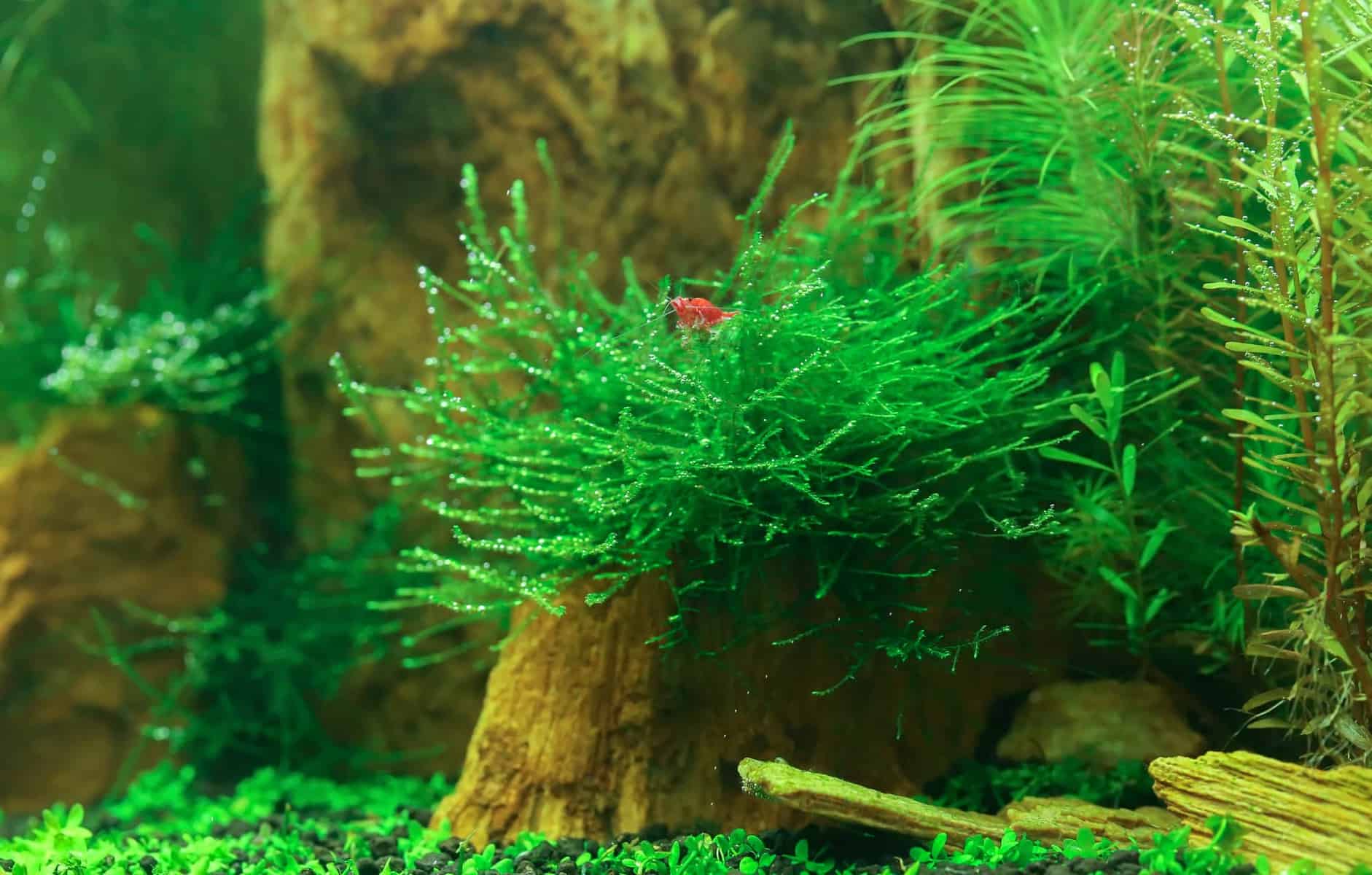
Java moss is an attractive plant that’s beginner-friendly and does well in a betta tank with regular lighting.
The plant can be fixed to pieces of stone, wood, or other tank decorations and grows happily on the water’s surface. Java moss has a dense growth habit that provides the ideal hiding place for your betta and for shrimp if you decide to keep some as companions for your fish.
If you have a large tank or you want to propagate Java moss for your friends, all you need to do is take a cutting from the mother plant and attach it to a piece of stone or wood with thread or fishing line.
Red Root Floater (Phyllanthus fluitansor)

If you want to grow an unusual plant in your betta pet’s tank, Red Rood Floaters make an ideal choice.
These beautiful little aquatic ferns will quickly spread across the water’s surface if you let them, so you’ll need to thin it out regularly to allow light through to any plants growing beneath. Also, don’t forget your betta fish must be able to get to the water’s surface to breathe through its labyrinth organ.
The Red Root Floater plant has beautiful red and green leaves that spread across the surface, putting out long, dark red roots that take up nutrients from the water column. Sometimes, the plant blooms with tiny white flowers, creating a gorgeous display.
Hornwort (Ceratophyllum demersum)
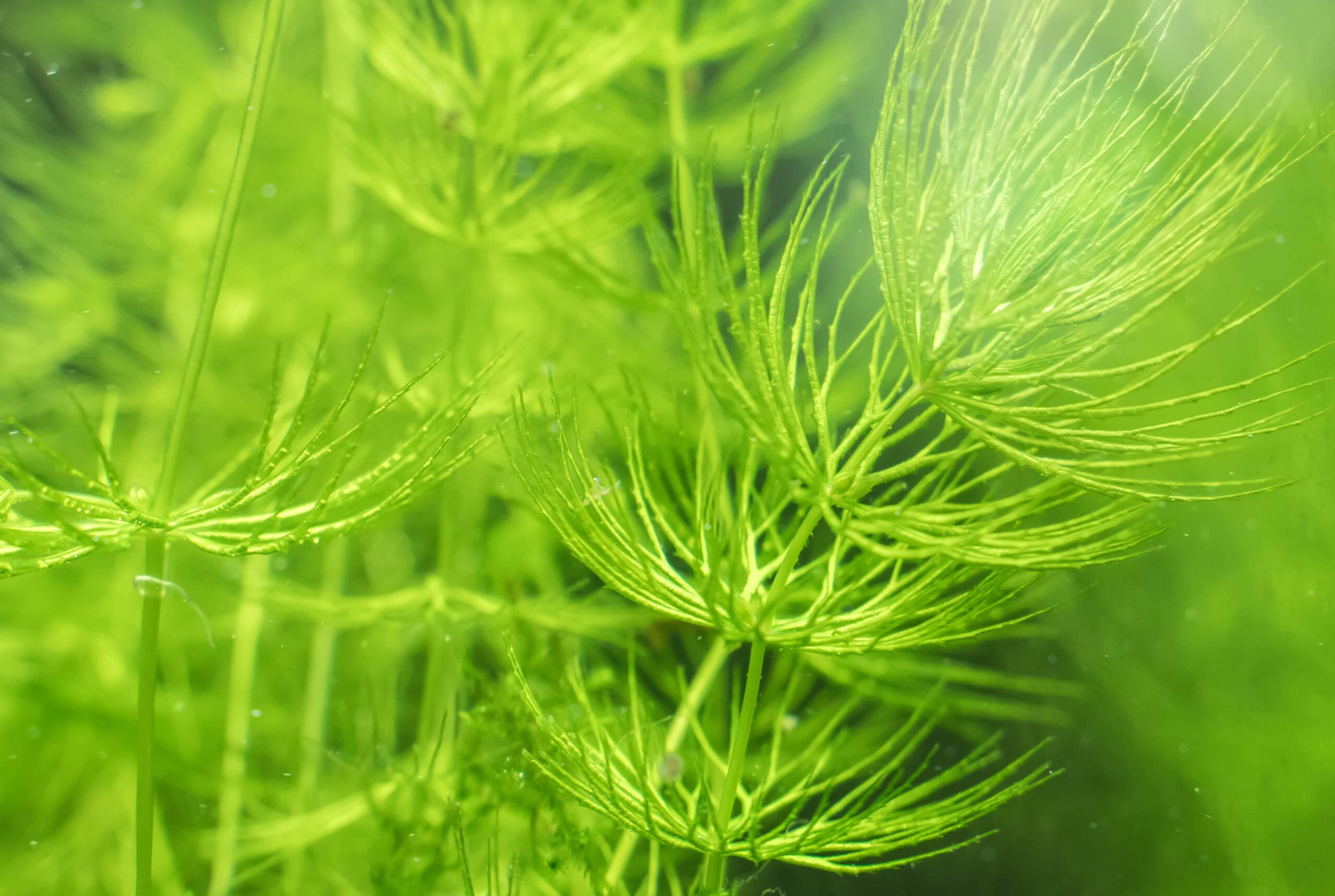
One big advantage of the Hornwort plant is that it will tolerate low to medium light conditions, making it a good choice to grow beneath floating plants in a betta tank. You can grow this hardy plant floating on the surface of the water or planted in the substrate, where it sends out long side shoots to propagate.
The main downside to Hornwort is that it has tiny, needle-like foliage that the plant sheds constantly, which can be a pain if the needles clog your aquarium filter intake. Also, the plant needs low lighting levels, and if the light is too bright, it tends to get rather stringy.
Creeping Primrose Willow (Ludwigia repens)

The Creeping Primrose Willow plant can be seen growing wild in various parts of the Americas and is regarded by many people as an invasive weed.
You can grow this plant under regular aquarium lighting, either floating free on the water surface or planted with its roots submerged in the substrate. This attractive plant has dark green, reddish brown, or red leaves and changes its color depending on how submerged it is.
Amazon Sword (Echinodorus bleheri)
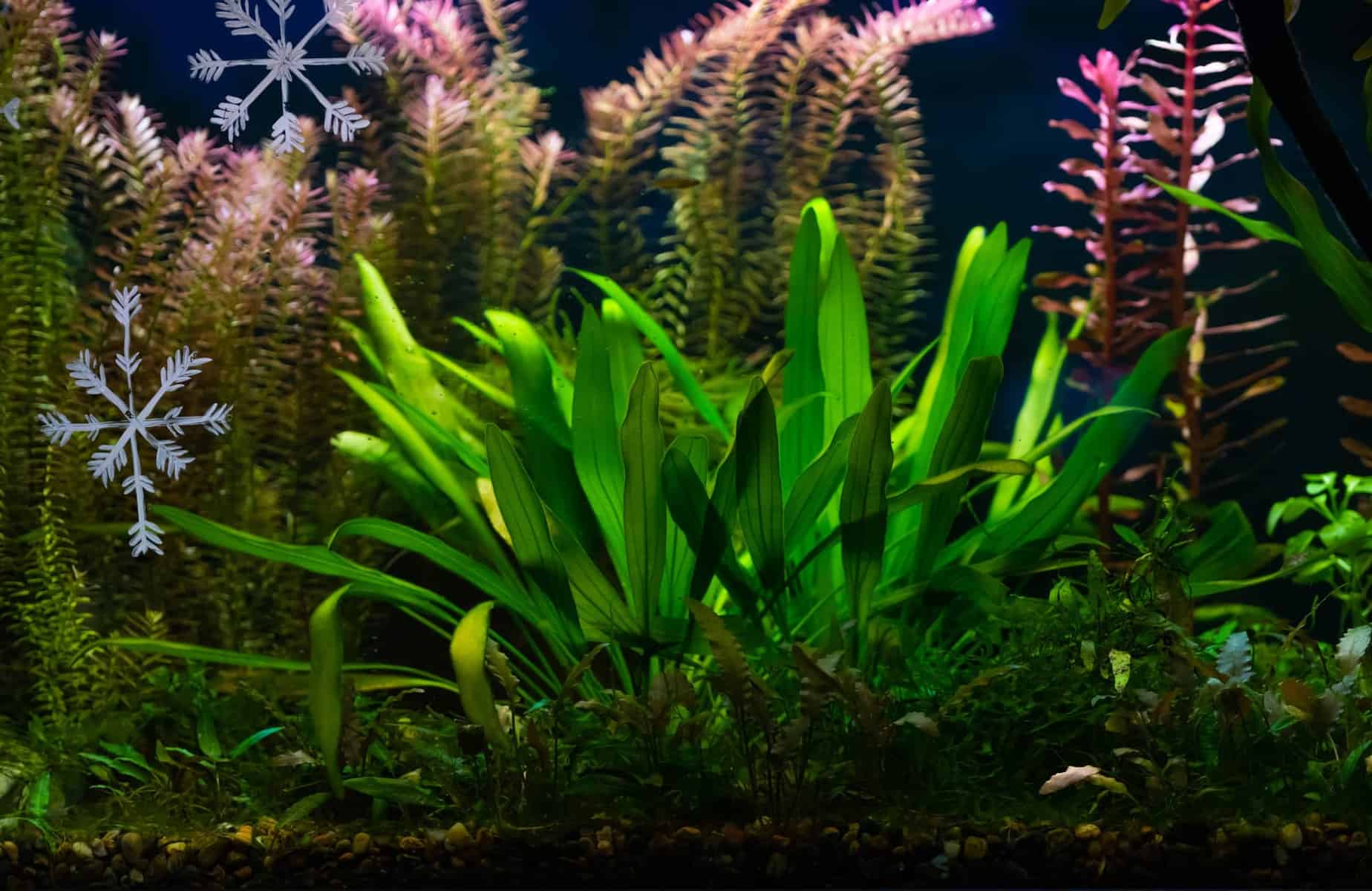
Amazon Sword is another extremely popular aquarium plant with broad leaves, providing perfect resting places for your betta fish. In the wild, this plant can grow up to three feet tall. Aquarium specimens won’t get that big, but we do recommend keeping this plant in a larger tank of at least 10 gallons rather than a small or nano aquarium.
It’s a good idea to anchor the plant firmly in at least three inches of your substrate to stop it from getting uprooted by the filter current. You’ll also need to supplement Amazon Sword with CO2 and a liquid or tab nutrient supplement to boost its growth.
One way to grow the plant is by placing its seeds in damp sand or, alternatively, by taking newly formed plants that grow on the underwater flowering stems and planting them directly into the substrate.
Pygmy Chain Sword Plant (Echinodorus tenellus)
The Pygmy Chain Sword plant is ideal for use as a carpet plant because of its low-growth habit, but that means it needs high lighting to thrive.
The plant is super-easy to propagate, as it sends out runners beneath the substrate from which new plants emerge, eventually covering the substrate in a vibrant green carpet. Nutrient supplementation is advisable to encourage the plants to grow and spread.
The Pygmy Chain Sword plant is a great choice for a small betta tank, and it’s easy to maintain. All you need to do is keep the plant tidy by pinching out overgrowth to control the spread of its runners.
Marimo Moss Balls (Aegagropila linnaei)

I love Marimo Moss balls for betta tanks!
These green spheres are not actually plants but a species of algae that grow on lake beds, where the water flow eventually shapes them into balls. Marimo Moss balls do well in low light conditions and they don’t require supplementation since they prefer zero levels of ammonia, nitrite, and nitrate.
My betta fish seem to really enjoy having these unique plants in their tank, often using them as a place to rest and play, even pushing the moss balls around like miniature footballs! Marimo Moss Balls are very low-maintenance, although it’s important to keep in mind that their round shape may become flattened over time if the water current in the tank is too slow.
Pennywort (Hydrocotyle leucocephala)
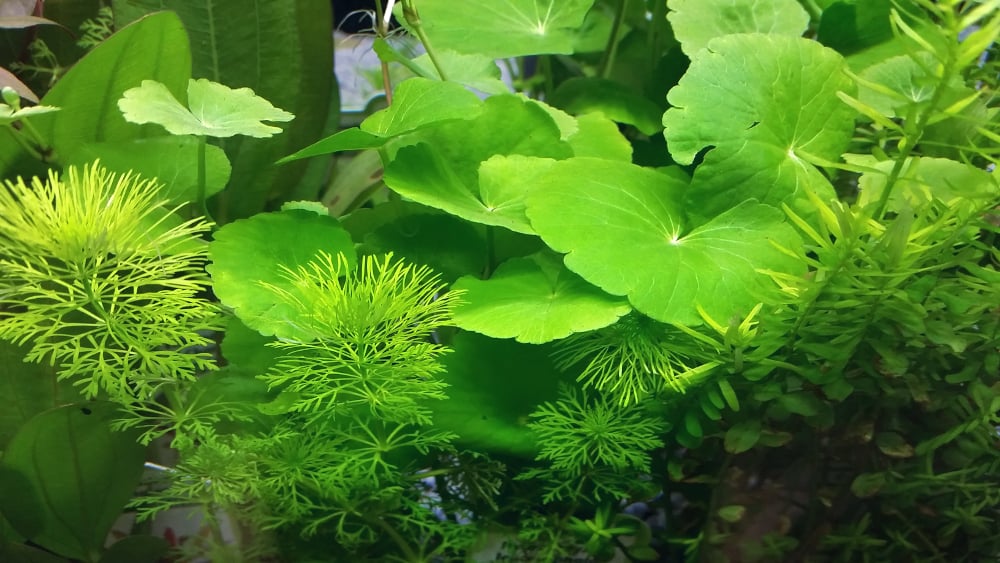
Pennywort comes from Southern Mexico and northern Argentina, where it grows in wetlands and marshes.
The plant is easy to grow and has small, round leaves that grow on a vine-like stem to a height of around eight inches. If the plant reaches the water’s surface, it often produces white blooms.
You can grow Pennywort as a floating surface plant or underwater, offering your fish the ideal spot to build a bubble nest or take shelter in. This is an easy plant to grow and doesn’t need much light to thrive. You’ll need to trim the plant quite often to stop it from overgrowing and covering the surface so that your betta fish can breathe air when he wants to and feed easily.
Water Sprite (Ceratopteris thalictroides)
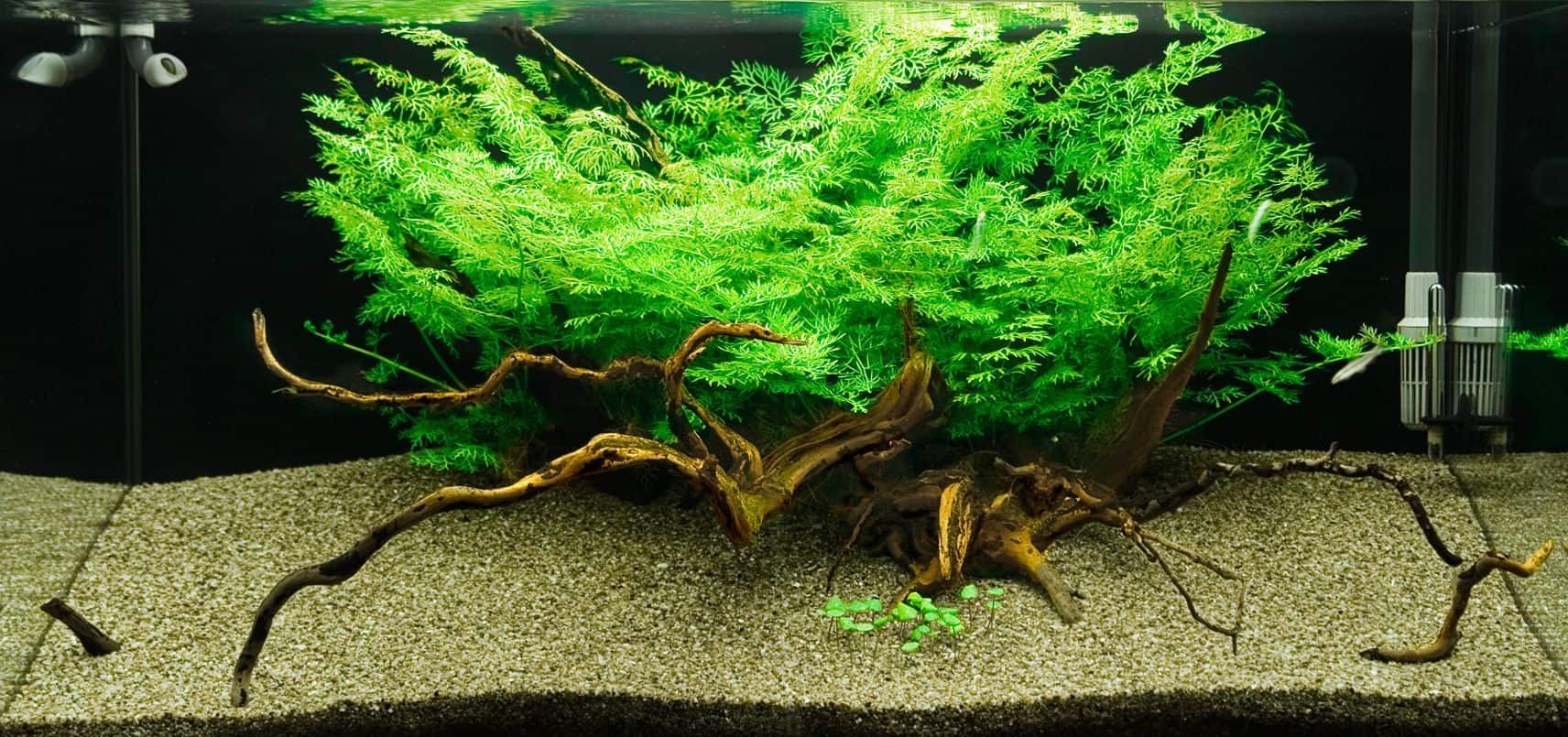
Water Sprite is an aquatic fern that provides an ideal place for your betta to hide and explore among the plant’s dense leaves.
You can grow the plant in low light conditions, although it will do much better in an aquarium where the light levels are high. Essentially, the more light the plants get, the quicker they grow, taking up nutrients and keeping the water clean. Water Sprite can be grown as a surface cover plant or anchored in the substrate, and to keep it tidy, you’ll need to prune the leaves at the stem base.
Aponogeton ulvaceus (Aponogeton ulvaceus)
Aponogeton ulvaceus is native to Madagascar and is an unusual plant that makes a fantastic showpiece in a large betta tank.
The plant boasts pretty pale green spiral leaves that can grow up to a foot in length, although there are several varieties of the species with different sizes, leaf shapes, and colors.
Aponogeton ulvaceus typically comes as a dried bulb, making it perfect for online purchase if you can’t find this species of plant in your local fish store. All you need to do is bury the bulb in your betta tank’s substrate; the plant will rapidly grow toward the water surface to find the light it needs.
FAQs
In this part of our guide, we answer some of the most frequently asked questions about plants for your betta’s tank.
Fake vs. Real Plants – What Is Better?
If you don’t want the hassle of caring for living plants, you might wonder if fake plants are a good option. The answer here is yes and no!
Both options provide resting places and shelter and create dappled shade for your betta’s aquarium, effectively replicating his natural environment perfectly.
Real plants need regular pruning and trimming to prevent them from becoming overgrown and taking over your tank. You’ll need to provide living plants with enough light for photosynthesis and healthy growth, and some species benefit from CO2 and nutrient supplements, creating extra expense.
However, real plants give off oxygen and take up CO2 and nitrates, making the environment healthier for your betta fish.
Fake plants need no maintenance besides occasional cleaning to remove algae and debris from their leaves, and they don’t need any form of nutrition.
On the downside, fake plants can sometimes injure your fish if his flowing finnage gets snagged on sharp leaves. For that reason, I recommend always choosing silk plants rather than plastic ones for use in a fish tank. Some silk plants can fade over time, leaving you with a washed-out-looking ornament that you’ll need to replace.
Are Real Plants Good for Betta Fish?
As mentioned above, real plants are an excellent choice for betta fish! Real plants take up nitrates as nutrients from the water, use carbon dioxide, and give off oxygen during photosynthesis, promoting a healthier environment for your fish and other livestock.
Species of floating plants can be used to create dappled shade and provide shelter for fish fry and invertebrates, replicating the natural habitat of betta fish. Finally, your betta loves to rest and nap throughout the day on flat leaves, and real plants can be used to provide a safe hammock.
Can I Put a Bamboo Plant in My Betta Tank?
Yes, you can put a bamboo plant in your betta tank. Bamboo grows naturally close to water, so provided you keep the leaves above the water line, the plant will happily use fish waste and nitrates as a source of nutrition and should thrive.
Where Can I Buy Live Aquarium Plants?
You can buy live aquarium plants in most good fish shops and pet stores, and there is usually a good range of species to choose from. However, if you want a particular, unusual variety of plants, you might need to search for it online and buy directly from a commercial grower.
It’s a good idea to choose plant species that are easy to propagate at home so you’ll never need to buy more.
Final Thoughts
We thoroughly recommend adding live plants to your betta fish tank! Plants not only look great, but they use harmful nitrates as nutrients, give off oxygen, and take up carbon dioxide, creating a healthy, natural environment for your fish.
Of course, if you don’t want the hassle of maintaining living plants, you could opt for silk ones instead, although they might fade and need replacing from time to time. Don’t use plastic plants in a betta fish tank, as they often have sharp edges that could injure your pet.
Why not choose some of the plant varieties featured in this guide to create the perfect environment for your beautiful betta?


